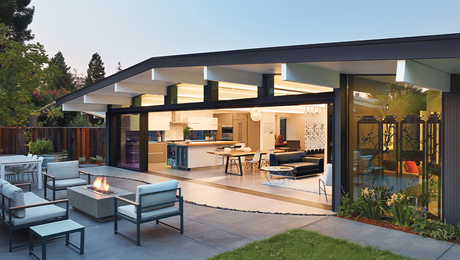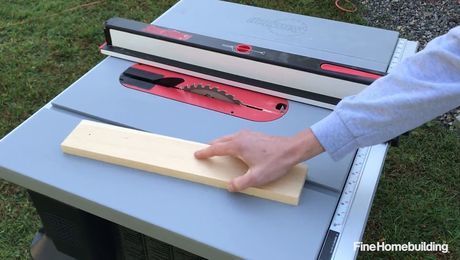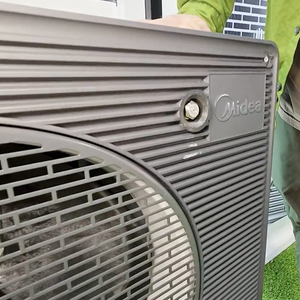What’s the best French Drain Technology?
OK, someone out there must have messed with either or both of these two technologies and can tell me which one makes the best, non-clogging, sediment-resisting French Drain!
Choice #1 is Varicore, a geotextile wrapped, multiple piped, easily trenched in system that seems to get used a lot on golf courses and parking lots (http://www.varicore.com/)
Choice #2 has a much less slick website and depends on a capillary action to resist clogging (sediment never enters the capillary drains…..www.smartdrain.com)
I don’t want to just use a conventional tubular French Drain because that’s what someone did last time and it clogged nearly right away (and now, I have a wet basement!).
So, anyone tried these for real? Anyone have any better ideas for drying out a backyard at the bottom of a hill, with a spring in it part of the year—and a house with a wet basement?
Thanks!
(and yes, I searched French Drain in the archives, but none of the answers were exactly on-point to my question).
NotaClue
Edited 5/24/2006 4:59 am by NotaClue



















Replies
which way are the holes in the pipe favcing.. up or down and did they use sediment cloth...
Life is not a journey to the grave with the intention of arriving safely in a pretty and well preserved body, but rather to skid in broadside, thoroughly used up, totally worn out, and loudly proclaiming
WOW!!! What a Ride!
Forget the primal scream, just ROAR!!!
Looks like the holes were down.
But eventually French drains fill in; that's sort of the problem.
So, anyone have any experience with a a landscaping drain technology that DOESN'T fill in?
Thanks
NotaClue
So, anyone have any experience with a a landscaping drain technology that DOESN'T fill in?
Well, yeah. I run an umbrella out from the perimeter. Umbrella's made of 6 mil poly and xps, alternating layers. It's important for me to have the insulation there, maybe not for you. I buried a standard drain system with fabric here but never got a drop out. Don't bother with that any more, the umbrella's perfectly adequate.
Here's a side yard, on top of the umbrella. Periwinkle, hostas, and bulbs are all happy- and shallow rooted. PAHS Designer/Builder- Bury it!
french drain technology sounds like an oxymoron.
Welcome to the
Taunton University of Knowledge FHB Campus at Breaktime.
where ...
Excellence is its own reward!
We call them Freedom Drains now.
Actually a "French Drain" does not use any type of pipe at all. Do a Google search and you will get some good decriptions of a true French Drain.
Since your foundation drain is causing you problems you may want to approch the solution in two steps. (1) remove and install the foundation drain of your choice. Use soil seperator cloth or filter fabric completely aroundl the crushed stone bed. (2) add back fill of dense clay above the foundation drain system to within 12" to 16" of the finish grade. Add a true French Drain in this final space to direct water away from the foundation.
The sub surface clay fill will act a barrier to keep the finer silts from washing down into the gravel bed.
Dave
I made a wood basement, so it was pretty important it remain dry. I covered the exterior of the basement first with plastic dimple fabric by Dorken that lapped the footing, then put in flexible perfed drain pipe over the lap of the dimple fabric, all around the footing in a circle, with the drain pipe wrapped completely in landscape fabric. This works perfectly.
Some of the water you are getting into your basement may be coming in the walls from hydrostatic pressure before it ever gets to the drain level. The dimple fabric takes care of that. Slapping on a coat of asphalt sealer is often done for waterproofing of concrete basements, but it doesn't seem to work very well from my observation and experience.
Hmmm.
Maybe I can post a diagram that will make it more clear what I am up against. I just tried attaching a drawing in Microsoft Word, that didn't work; anyone have any idea what the easiest way is to attach a drawn diagram to a posting?Umbrella would be great but the space is really large.
The stand-off basement floor makes sense to me; That sounds like what I found in the Building Science website.But it's really the drainage issue that haunts me; the current French drains are clogged and if I have to dig up the entire backyard, I won't want them to clog again soon.
Thus the question: is there any outside drain technology that you guys have found really resistant to clogging with silt and sediment?
Thanks
NotaClueEdited 5/25/2006 1:31 am by NotaClue
Edited 5/25/2006 1:32 am by NotaClue
It appears you are dealing with two issues: a wet building and a wet landscape. I don't know anything about fixing landscaping that doesn't involve a grader, but i know a little about getting water out of a house. is there any outside drain technology that you guys have found really resistant to clogging with silt and sedimentI'm not clear what you mean by "outside" drain technology, but several posters have told you how to keep the drains from clogging by wrapping the pipe with filter cloth/landscape fabric/whatever you wish to call it. It lets water pass into the drain perforations without letting the fines in. I disagree that putting clay up against your outside wall is a good idea...it can actually force water into the wall if your wall is not watertight (exception is bentonite sheeting made for this purpose.) There are several 'board' technologies that use a filtering system attached to a polystyrene foam board to prevent just this problem. This is a pretty good synopsis of the choices re keeping the water flowing and away from your walls. In the 12" Goldline septic lines i installed, the pipe was already covered in the filter fabric, which the plumbing suppliers termed "socked". It wasn't available like this in the 4" footing drain size i used, so i "socked" it myself with landscape fabric and backfilled carefully by hand with sand the first few inches to be sure it hadn't torn. I don't know what you mean by the "stand-off basement floor", unless you are confusing the plastic dimple fabric i mentioned as an exterior foundation sheeting material with the panels that have the dimple fabric attached to OSB, which are touted for use as underlayment in damp locations. This has always seemed to me a pretty dubious way of dealing with moisture in a slab, but perhaps i've mistaken your reference. I guess what i want to get across is that keeping the water outside the wall is the first step, and the second is getting it away from the foundation. Skip either one and you'll be tearinig your yard up a third time. Pictures...i was trying to attach an image today and they would not attach in IE, but they would with my Mozilla browser - no idea why. The preference here is for an image saved as a .jpg instead of in Word. There are others here with better info about making attachments, but that's a start.Edit: Here is the .pdf for Delta, which makes the plastic dimple fabric: http://www.deltams.com/bvf/ca-en/service/product_brochures/ below_grade/DELTA_Systems_For_A_Healthier_Home.pdf (Copy and paste the whole URL.)
Edited 5/25/2006 3:32 am ET by splintergroupie
I disagree that putting clay up against your outside wall is a good idea...it can actually force water into the wall if your wall is not watertight (exception is bentonite sheeting made for this purpose.)
My suggestion was for using a dense clay layer, not a complete backfill. The dense clay layer beneath a true near surface French Drain would reduce the amount of water penetrating to the footing drains.
A near surface French Drain is a tench filled with larger crushed stone and covered with landscape cloth. This is then is cover with a layer of top soil and whatever plantings, sod, or foundation landscaping that is desired. The idea is to provide a near surface path to take the ground water away from the foundation wall before it has time to perk down to the lower footing drains. A path of least resistance, so to speak, near the surface.
I believe I saw a TOH episode where this one done as remediation for a home with a wet crawl space, Might be on their web site.
The dense clay layer is from the Building Science web site (Building America material), I think, or maybe from a SIP site. I printed it out, so I didn't bookmark it . I'll find it this evening when I get home.
I am with you on the grading issue. It sounds as if the foundation was set to low to start with, leaving little or no room to slope the grade away from the house. A shallow swale in the front may have been the right way to do it when the house was built. Now, without some major grading and excavation, the house will continue to act as a dam in the path of the downhill movement of surface water.
Dave
My suggestion was for using a dense clay layer, not a complete backfill.
I"ll buy that. I don't know if that's the impression one would take from what you wrote, though:
add back fill of dense clay above the foundation drain system to within 12" to 16" of the finish grade.
The near-surface French drains remove water than falls or melts, but it doesn't help with water that percolates to the footings from outside the perimeter they serve. I unlined, it wouldn't work in sandy soils like my present one. Maybe that's why TOH featured that technique on a house with a crawl space instead of a basement?
An earlier house of mine was a victim of being set too low, and it flooded constantly as a consequence of that, and of the water being channeled into the low spot from a hillside above, and of being set in pure clay. The owners who sold it to me had abandoned the lower half of the house and the basement was literally hopping with frogs when i bought it. JLC had an article on the cover showing some guys installling the dimple fabric, so i checked into the price of the stuff, talked to an early adopter of it, and got some shipped. Afterward i couldn't believe people would go to the hassle of rolling on the tar stuff that doesn't work when this stuff is reasonably priced, fast to install, and actually performs as advertised.
I have lost track of all of the options and conditions.But for a deep footing drain clay also has it uses.Back fill with a drailable material, ie gravel. But about 1-2 ft from the top lay a horizontal layer of clay to act as a cap to direct surface water away from the house.Then finish filling will top soil.
Agreed about drainable backfill with a clay cap. I found Dave's earlier post ambiguous about where the clay starts and ends, however, which i hoped to clarify for the DIYs. I'll get cards printed: "Miller's Translation Service". <G>
"I'm not clear what you mean by "outside" drain technology, but several posters have told you how to keep the drains from clogging by wrapping the pipe with filter cloth/landscape fabric/whatever you wish to call it. "Yep, I think I have a pretty good understanding of Geotextile cloth and its proper role in a draining system---the very first original post in this thread referred to two different drain systems; one, Varicore is basically a pre-socked, narrow slit trench tube drainage system; the multiple tubes and the neat, factory installed sock is supposed to keep it silt/dirt free and working for years. The other system, smartdrain.com, uses a totally different technology; rather than depending on Geotextile cloth, it uses capillary drainage technology---and claims it never will and actually can't clog as a result. I wasn't boosting either technology; I was asking if anyone had any field experience with Either technology or with any other technology that would yield a French drain or French drain equivalent that would be less likely to clog...."In the 12" Goldline septic lines i installed, the pipe was already covered in the filter fabric, which the plumbing suppliers termed "socked". It wasn't available like this in the 4" footing drain size i used, so i "socked" it myself with landscape fabric and backfilled carefully by hand with sand the first few inches to be sure it hadn't torn." And filtered sand appears to be an important part of any drainage system; I'll remember your notes when we go to install whatever system we install this summer!"I don't know what you mean by the "stand-off basement floor", unless you are confusing the plastic dimple fabric i mentioned as an exterior foundation sheeting material with the panels that have the dimple fabric attached to OSB, which are touted for use as underlayment in damp locations. " Sorry, I was struggling to find the words; basically, it was a way to try and talk about dimpled drainage flooring or sub flooring systems that allowed for drainage under a finished floor install."I guess what i want to get across is that keeping the water outside the wall is the first step, and the second is getting it away from the foundation. Skip either one and you'll be tearinig your yard up a third time." I absolutely get that; the tough part is that I am at the bottom of a hill and during the winter, an underground spring pops out at the bottom of yard! (with the winter rains---it is the California coast; we rain here in the winter rather than snow)---Every house on the hill has the same problem; it's just that I want to dry out the back of my house and the yard so that my daughter can play in them----
This, this entire exchange.Thank you, BTW, all of your comments have been quite helpful so far!
NotaClue
The name of an author came back to me today and the article i recalled should be more helpful than i've been. Go to the "Journal of Light Construction" website and put "Brent Anderson" into the search. You should get a list of articles, one of which was printed Mar. 99, by Brent Anderson, titled "Foundation Drainage". It's a .pdf for free and has good diagrams and pictures to study about laying pipe. I recalled his name bec he used to own the business in MN (I.C.E.) from which i bought my first dimple fabric about ten years ago. I also saw another article listed which specifically addresses the Delta fabric i mentioned, though the article will cost $2.95. It's by Don Jackson in the August 2000 issue, called "Pratical Foundation Waterproofing".One of the things about the dimple fabric that i preferred is that it can be applied over a dirty wall. Some of the other systems, like self-adhering rubber sheets, or sprayed-on rubber, need a clean wall.
Excellent!
I'm there.
Already a subscriber on-line to JLC. Should have thought of looking there too.
NotAClue
If you want to attach a diagram, if you can generate one and then save it in either .jpg or .gif format that should work.
Re your french drain problem, I can't really help with your innovative technologies questions, however you stated something along the line that they clogged very quickly after they are installed. I'd guess the root of your problem in addition to installation methods and materials is your soil type, so it might be good to approach it from that angle.
Also, what works for one person may got work for another, again based on soil type and other site conditions. So the best technology is the one that works for your situation. Personally though, I agree with Piffin in that I'm not sure the word technology even belongs in a discussion about french drains.
No doubt that you don't want to go any more trial and error routes with 80 tons of dirt....
Why don't we discuss what went wrong your existing system while we wait for someone to respond to your "innovative technology" question.
What is your soil type anyway? And exactly how was the existing drain installed and with exactly what materials? Were the drain tails daylighted? how many drain tails do you have? How is the grading around your house? What about your gutters & downspouts - are they channeled well away from the foundation?
Sounds like the waterproofing method was ineffective too. Describe that.
Another thought - in my backyard I have a situation where I have 6 downspouts draining into an underground drainage system. This is partially due to an overly complicated roof line, but basically about 40% of a 3000 sq ft single level house (large roof) drains into one drain pipe, and the system is under 4 or 5 feet of dirt, concrete patio and a brick retaining wall - you can bet didn't want it to clog - the feeders are 4" sched 40 PVC and the trunk drain tail is a 6" sched 40 PVC. I also added a cleanout to the upstream end of the trunk. My point being that with regard to drain systems in some situations bigger is better.
Edited 5/25/2006 6:55 am ET by Matt
"Why don't we discuss what went wrong your existing system while we wait for someone to respond to your "innovative technology" question.What is your soil type anyway? And exactly how was the existing drain installed and with exactly what materials? Were the drain tails daylighted? how many drain tails do you have? How is the grading around your house? What about your gutters & downspouts - are they channeled well away from the foundation?"Right; excellent questions.Well, we actually had a soil engineer out here (earthquaking the foundation), so I have real answers for you.Soil Type: thin layer of top soil, then 20-25 feet of hard packed clay, then bedrock under that. For earthquake country, this is considered pretty good stuff to build a house on; say, 8 out of 10 points. As a back yard, it means the water wants to skid down hill into my basement---except where it bubbles out of the spring in the middle of my backyard at the height of the rainy season...Existing drain: we bought the house last year; the previous occupant lived here for 45 years and is 76 now and doesn't remember "except for the big flood" in the 1970s, which is when he put in the current system. We're part way through excavating it; looks like what he did is put in clay pipe French drain systems---some of which we've found shattered as we dug (earthquakes?) in a big diagonal pattern across the yard. Those pipes led to a French Drain at the base of a concrete retaining wall build in back of the house (remember, I'm at the base of a hill) and then to 4" mains that led to two traps and eventually to the main storm drain. Everything above the 1st trap has clogged with a tenacious clay like stuff that won't come out easily when we've tried to snake it. Ugh.Drain tails daylighted: I'm not sure what that means, but I can guess it means were the ends of the drains at the uphill end of the yard left "findable" and therefore, snakable; the answer is no...(who in the heck designed the last system? argh)How many drain tails? From our excavations, I would say at least 3.How is the grading? A disaster; the ground rises about 12 feet from the ground floor of the house to the end of the back yard (uphill) over a distance of about 60 feet (which, for San Francisco, is a huge yard); the soil all slopes into the house, though attempts have been made to lead the water down a side yard on the surface along a pebble path. There is no really realistic way to regrade the entire hill above me; from my backyard to the next street level, it rises a further 60 feet! It is possible to level my yard out further back with a new retaining wall and install a series of drains across the base of that (something we are current planning on doing), dig up the drain in front of the old wall and put in a new one (2nd line of defense) and criss cross the entire backyard in a "herring bone" pattern...Gutters and downspouts: Are all taken to the front (downhill) side of the property; none drain to the backyard...Does this help visualize things?
NotaClueEdited 5/26/2006 2:17 am by NotaClue
Edited 5/26/2006 2:19 am by NotaClue
Did this post OK?
I tried to draw a cross section to help visualize things...
NotaClue
>> I don't want to just use a conventional tubular French Drain because that's what someone did last time and it clogged nearly right away (and now, I have a wet basement!). <<
>> "except for the big flood" in the 1970s, which is when he put in the current system. <<
Are you saying that the current system worked for up to 30 years, or, maybe the basement has been leaking for many years? 30 years and "right away" seem to be a bit different, although admittedly you definitely want a foundation drain system to last much longer then that. Clay pipe is antiquated stuff.
Anyway, I don't have a lot of time to respond but will say that I think your drainage problem can likely be resolved with conventional methods, although it is not gonna be cheap no matter how you go. Sure, you can buy the miter saw with the laser sight, but is that really gonna produce better results or just add some more expense to an already expensive purchase?
Can you post some photographs of the property - maybe a few from somewhat far away so we can get the overall picture of how the land around the house lays?
Drain tails means drainage pipe at the the low end of the system where the water exits. Sounds like your drain tails are connected to a storm drainage system.
"Are you saying that the current system worked for up to 30 years, or, maybe the basement has been leaking for many years? 30 years and "right away" seem to be a bit different, although admittedly you definitely want a foundation drain system to last much longer then that. Clay pipe is antiquated stuff."Well, this is California, and separate from the other typical biblical events of earthquakes and droughts, we get intermittent heavy rainfalls---the El Nino years and perhaps something in the 1970s was what he was referencing---When I look at the basement wall, it's pretty obvious to me that it's been weeping for a very long time..."although it is not gonna be cheap no matter how you go. Sure, you can buy the miter saw with the laser sight, but is that really gonna produce better results or just add some more expense to an already expensive purchase?"Hmmmm. Well taken point. I don't mind paying for the best system on this item, though, because I really want that basement dry....I'll try to post a picture taken from on high with this posting.
NotaClueWARNING: I didn't know how to size these down as a Macintosh/Apple user, so they are broadband sized! The "black phoebe" jpg is a nest of a mud-loving bird that is nesting back there...
You do realize that you want to keep the stone around the drain pipe free of silt also, right? That is, put a layer of filter fabric over the top and sides of the gravel. Probably easiest to lay the fabric in the trench, add a little gravel, add the socked drain pipe, add more gravel, and wrap the filter fabric on around the gravel. If you keep silt out of the gravel, then the gravel works better and silt can't get to the drain pipe.Also, use geo-textile rather than cheap filter fabric. Its longer lasting. Dupont makes one called Geo-Tec or something like that, I believe.
french drain technology
This...a very old forum i am stepping into...filters must be replaced in or around any device where it is used...so why on earth would we design obsolescence into a basement, crawlspace, surface or subsurface? Corrugated filtered pipe going to fail everytime as is noted here in this forum. Would love to help any or all to get it right, the first time. I saw this forum, new to me...seems logical that age old questions seem to be answered with age old solutions. Quite costly over time.
There is a new generation of pipe, thinking, design, engineering. We have a patented slotted angle pipe which creates nodes and therefore pushes small sediment through to exhaust...large sediment and roots will not enter. When installed according to our specification, it provides a protective envelope for the life of the structure...landscape...water reclamation. We offer a 10 year standard warranty with lifetime option, pretty much unheard of that we know.
We invite you to visit our website @:
http://www.dallasdrain.com
Great success...
k_1
French Drain Technology
I hear this quite a bit and we are trying to get the word out. We have designed, developed, tested, and patented what I believe is the best French Drain System out there. We cut slots on top of 4" SDR 35 pipe at alternating distances which gives the area of openings 5.11 square inches per 10' piece of pvc compared to 1.96" square inches of openings for conventional french drain pipe. The dimension of the slot width allows small fines or silt into the grooves but keeps the gravel (.75" to 1.5" natural washed river gravel) from entering the pipe. This is key because this design allows the freedom from using filter cloth which is the main cause for system failure, found through many years of installing, replacing and troubleshooting conventional french drain systems. The beautiful part, the alternating slots collect the water along the slot edges as laminar flow which turns turbulent at the bottom of the slots. This was a serendipitous discovery and found to serve as a self cleaning action. we developed a test tank that we tested different scenarios and were able to see the pipe in action and videotaped each test. the turbulent nodes stirred up the water on the bottom of the flow and moves the silt out to exhaust in regimented piles. Truly an incredible discovery. we always install with slots up so the smooth bore bottom of the pipe expeditiously removes the water without the danger of the collected water escaping the pipe which would occur with holes down or especially using corrugated pipe which has slots completely around the entire pipe. This contradicts the main purpose of a french drain which is to remove water from the soil. We have used this system for 15 years with few if any failures which includes over 200 new basements installations in Dallas Ft Worth area and some 25 to 30 new installations in several other states. It is proven! For more information, please look into our website: http://www.dallasdrain.com or call us at 972.484.8932.
KT @ Dallas Drain Co. Inc.